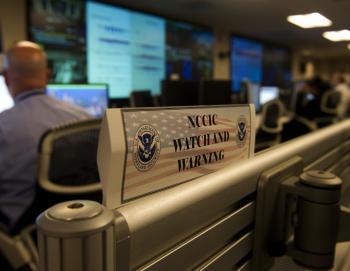Busy professionals and those who put much into securing their business technology may overlook one import area of safety: their children.
The Internet has shown many potential dangers to children. Accounts of child predators, online drug sales, and a large variety of sexual content are very real problems on the Internet. Many parents are cautious and restrict what their children do with computers, but there are many who do not. And those who do not may not be even aware of the potential risks.
In early November the Family Online Safety Institute held its annual conference in Washington, DC. Its topic: “Internet Freedom, Safety & Citizenship: A Call to Action". The conference focused primarily on what children are doing with communication technology.
This year’s conference had almost 500 attendees, including speakers from some very notable companies, such as Microsoft and Yahoo. Aside from those who attended physically, there were over 500,000 people who were reading about the event via Twitter as it was happening, according to Marian Merritt of Symantec’s blog.
As the event was happening, 1485 people posted a single Twitter hashtag, #fosi2010. (A twitter hashtag is used as a term users can easily search for or post in Twitter). From those 1485 “tweets” on Twitter, a tool was used to see how many people read those tweets. The end count was 575,394 people. (One of the attendees, Denise Terry of SafetyWeb.com used a tool called “TweetReach” to find this number.)
This brings up some serious questions. If over half million people can be drawn in by one ‘hashtag’ in only a few days, then how many people are actually reading our children’s information? How many people are actually in contact with our children? And what do we know about these people? It is very possible that if one child posts the right topic, they too can be connected to over half million people in one or two days.
Our children are now more connected than we may think. With the rise of social media and increasing Internet speeds, people are now very connected throughout the world. Digital conversations now happen in real-time, and are no longer confined to computers in the home. Wi-Fi hotspots and smart phones have brought the technology to everywhere we go.
So, how do we protect our children from being exposed to certain things on the Internet? Fortunately, there are many tools out there designed to address this issue.
Most operating systems now come with parental controls. Windows 7 now comes with a large variety of parental tools, both for programs and for web content. Restricting programs can help protect a computer from malware or viruses which utilize other programs to gain access to a computer system. Website filters can come in useful in many ways, such as blocking access to adult sites or gambling sites.
Mac OS X and Ubuntu Linux both also come with their own set of parental control tools.
There are also various services which can help protect Internet users with a different type of protection.
OpenDNS has a powerful tool called “Family Shield”. This tool doesn’t need to be installed, and can be used regardless of whether or not you use Windows, Mac, or Linux. It blocks computers from undesirable websites, like adult websites, phising websites, or websites known to spread viruses. It also makes it difficult to bypass the protection, in case the user was intentionally trying to get to a website which had been blocked.
They offer a free version, as well as a pay version. The pay version comes with a few more filters.
There are many other products available to help us protect ourselves from unwanted contents.
Aside from these solutions, many online services have started offering security and privacy options. Most major search engines have content filters, especially when searching images or video.
Other sites, like YouTube, do not even allow adult content on their sites. On YouTube, a user is required to register and login to verify their age before gaining access to any contents that are flagged as being racy or offensive.
In addition to these, one can directly block sites within the web browser they are using. Mozilla Firefox, Safari, and Internet Explorer all have the ability to block unwanted websites.
Any tool used to block or filter web content is a step in the right direction. However, there is one very effective way of keeping children safe, which does not require technology: to talk with them and educate them.
Many organizations exist to give people resources on protecting themselves and their children while using the internet. The Family Online Safety Institute, for example, offers resources to help parents. This information comes in the form of education. Ways to educate your children effectively and materials parents can give to children that are easy to read are available.
Many of today’s children do not know a world without computers. This can give them a natural ‘edge’ when using computers, when compared to parents who did not learn to use until later in life.
Fortunately, there are people out there looking out for children. Organizations such as SafetyWeb and the Family Online Safety Institute can help parents to understand the dangers of using the Internet and acquire tools to help keep their families safe.






Friends Read Free